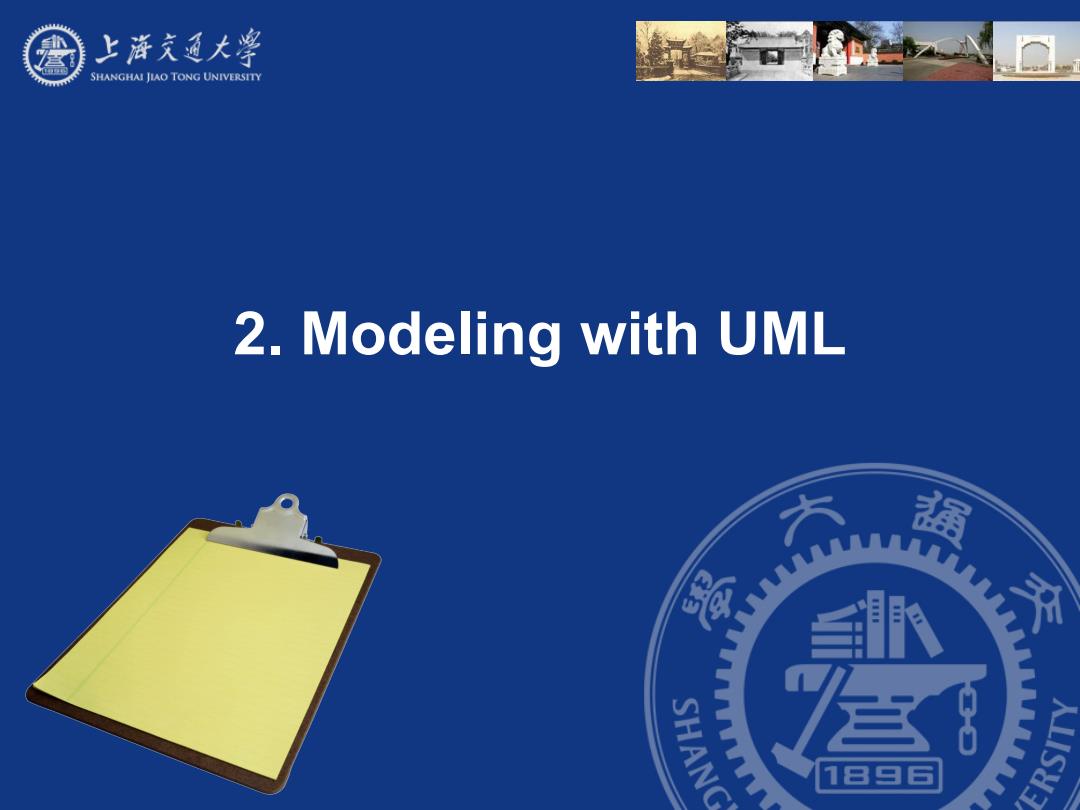
上游充通大学 SHANGHAI JIAO TONG UNIVERSITY 2.Modeling with UML 、 wwwW 之 SHANG 1日日G
2. Modeling with UML
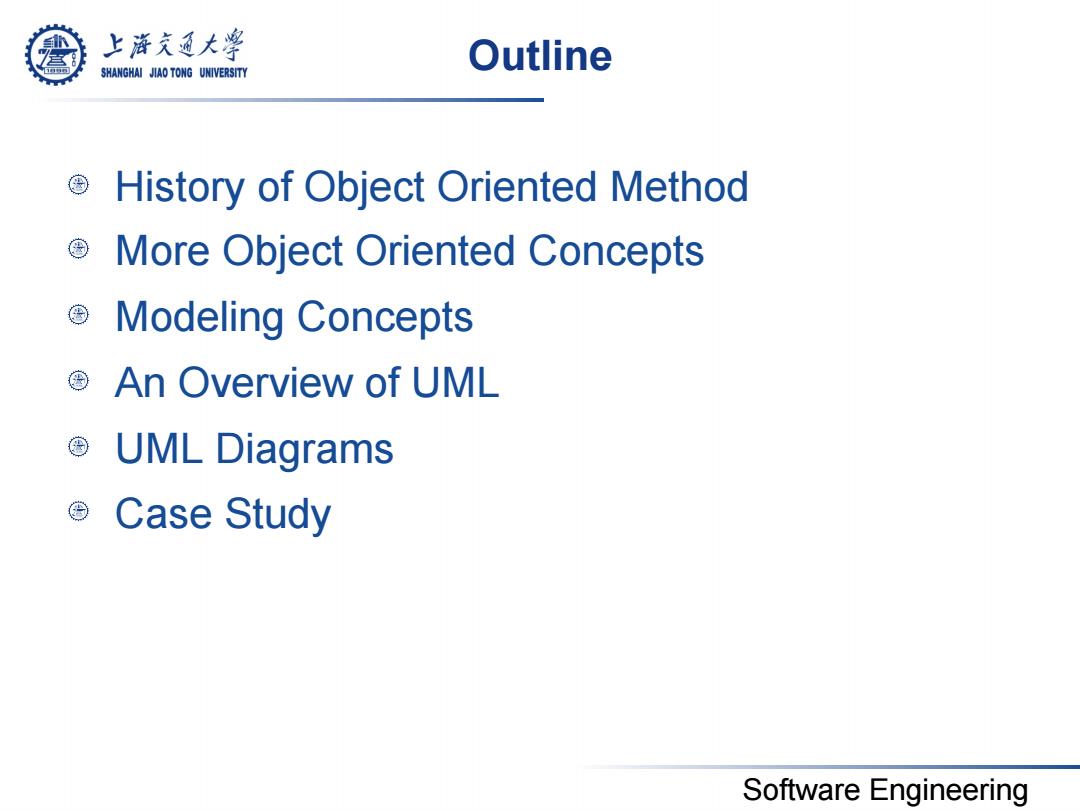
上游充通大学 Outline SHANGHAI JIAO TONG UNIVERSITY History of Object Oriented Method More Object Oriented Concepts Modeling Concepts ©An Overview of UML UML Diagrams Case Study Software Engineering
Software Engineering Outline History of Object Oriented Method More Object Oriented Concepts Modeling Concepts An Overview of UML UML Diagrams Case Study

上降充通大学 SHANGHAI JIAO TONG UNIVERSITY 1.History of Object Oriented Method Software Engineering
Software Engineering 1. History of Object Oriented Method
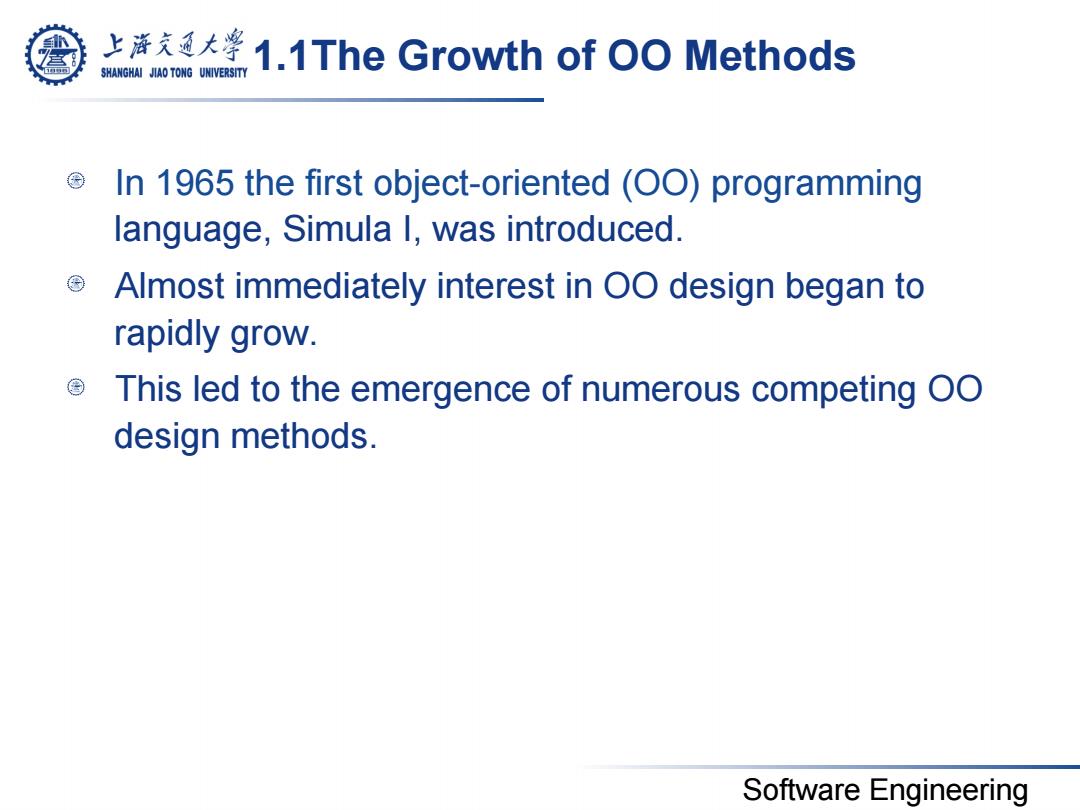
上大学1.1 The Growth of OO Methods SHANGHAI JIAO TONG UNIVERSITY In 1965 the first object-oriented (OO)programming language,Simula l,was introduced. Almost immediately interest in OO design began to rapidly grow. This led to the emergence of numerous competing OO design methods. Software Engineering
Software Engineering 1.1The Growth of OO Methods In 1965 the first object-oriented (OO) programming language, Simula I, was introduced. Almost immediately interest in OO design began to rapidly grow. This led to the emergence of numerous competing OO design methods
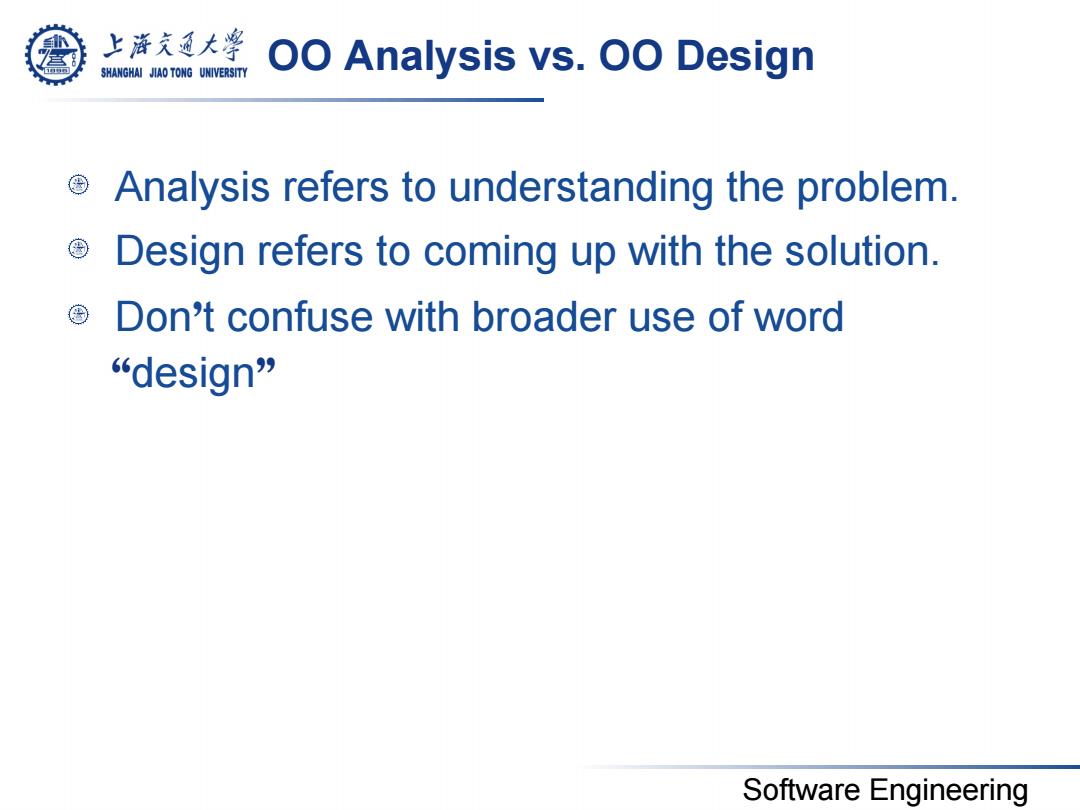
上浒充通大学 SHANGHAI JIAO TONG UNIVERSITY OO Analysis vs.OO Design Analysis refers to understanding the problem. Design refers to coming up with the solution. Don't confuse with broader use of word “design” Software Engineering
Software Engineering OO Analysis vs. OO Design Analysis refers to understanding the problem. Design refers to coming up with the solution. Don’t confuse with broader use of word “design

上游充通大¥ SHANGHAI JIAO TONG UNIVERSITY With all these design methods came numerous modeling languages. © By the early 90's there were 50+distinct OO modeling languages. © Darwinian forces in the marketplace led to three dominate methods,each having its own modeling language. Software Engineering
Software Engineering With all these design methods came numerous modeling languages. By the early 90’s there were 50+ distinct OO modeling languages. Darwinian forces in the marketplace led to three dominate methods, each having its own modeling language

上克大学1.2 Three Dominant Methods SHANGHAI JIAO TONG UNIVERSITY Object-oriented Analysis Design (OOAD)-Grady Booch 国 The Object Modeling Technique(OMT)-Jim Rumbaugh 国 The Object-oriented Software Engineering method (OOSE)-Ivar Jacobson Each one had its strengths and weaknesses. Software Engineering
Software Engineering 1.2 Three Dominant Methods Object-oriented Analysis & Design (OOAD) – Grady Booch The Object Modeling Technique (OMT) – Jim Rumbaugh The Object-oriented Software Engineering method (OOSE) – Ivar Jacobson Each one had its strengths and weaknesses

上游充通大学 SHANGHAI JIAO TONG UNIVERSITY (1)Booch (OOAD) Very complex The modeling language contained a formidable number of diagrams and resulting symbols Allowed for effective low-level design and its fine grain detail was even useful for documenting code. © Good at OO design,weak at OO analysis Software Engineering
Software Engineering (1) Booch (OOAD) Very complex The modeling language contained a formidable number of diagrams and resulting symbols Allowed for effective low-level design and its fine grain detail was even useful for documenting code. Good at OO design, weak at OO analysis
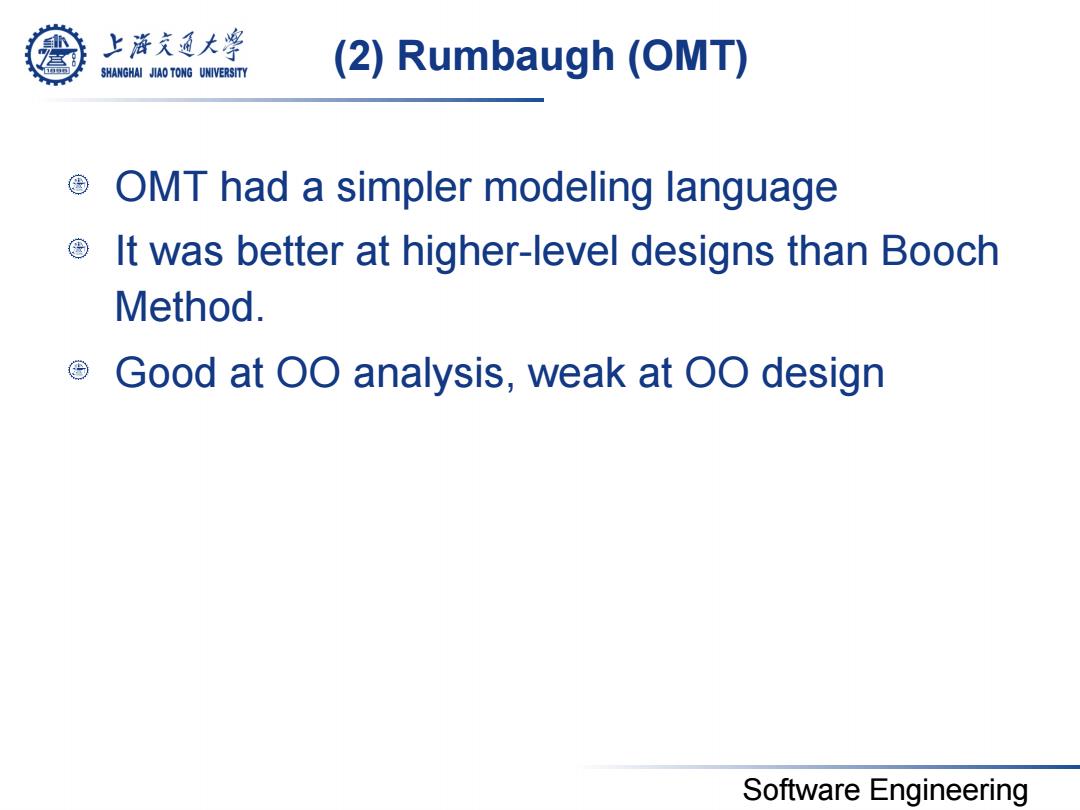
上游充通大学 SHANGHAI JIAO TONG UNIVERSITY (2)Rumbaugh (OMT) OMT had a simpler modeling language It was better at higher-level designs than Booch Method. © Good at OO analysis,weak at OO design Software Engineering
Software Engineering (2) Rumbaugh (OMT) OMT had a simpler modeling language It was better at higher-level designs than Booch Method. Good at OO analysis, weak at OO design
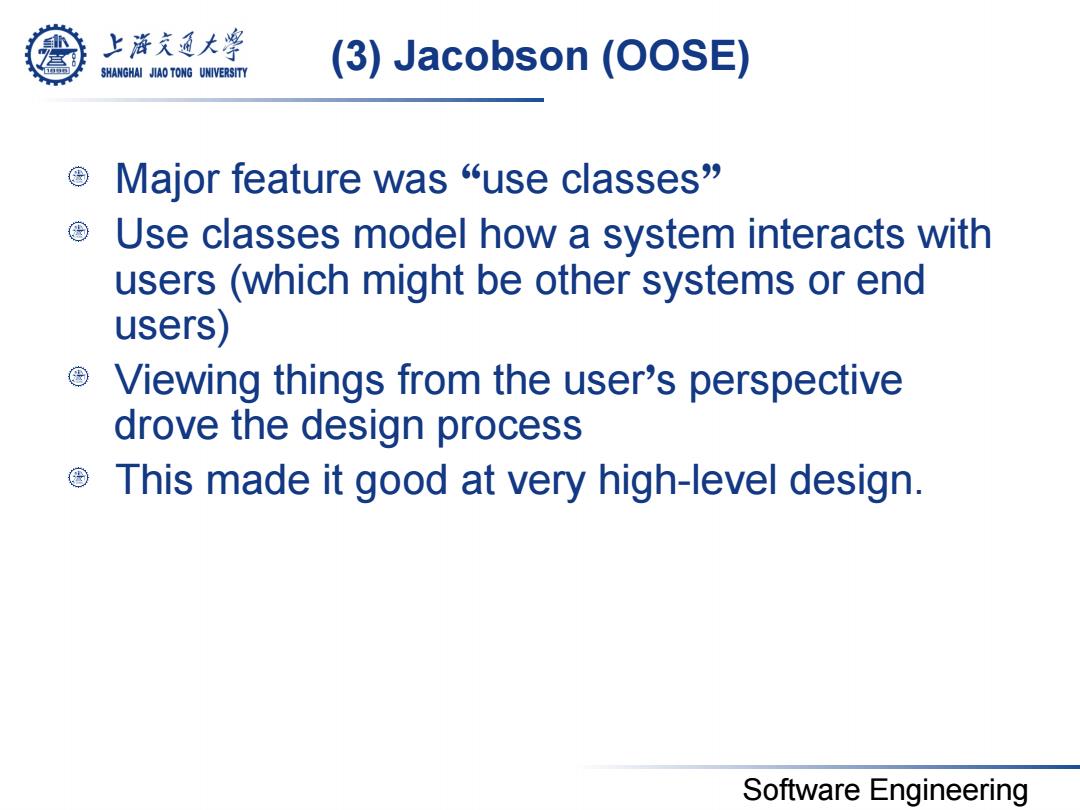
上游充通大学 SHANGHAI JIAO TONG UNIVERSITY (3)Jacobson (OOSE) Major feature was“use classes Use classes model how a system interacts with users (which might be other systems or end users) Viewing things from the user's perspective drove the design process This made it good at very high-level design. Software Engineering
Software Engineering (3) Jacobson (OOSE) Major feature was “use classes” Use classes model how a system interacts with users (which might be other systems or end users) Viewing things from the user’s perspective drove the design process This made it good at very high-level design